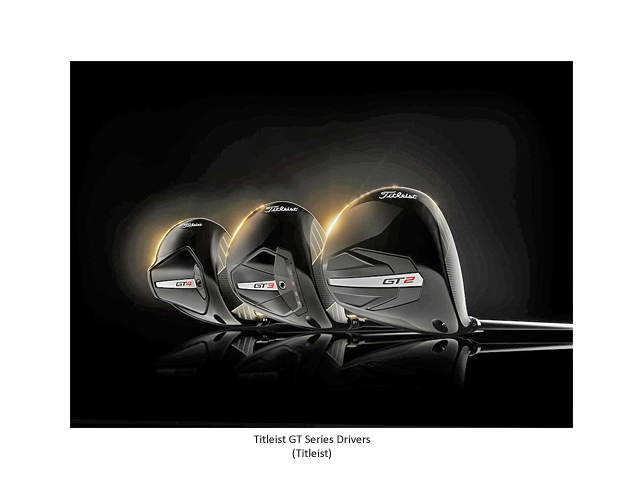 Titleist says the three new GT Series drivers are breakthroughs in materials employed, shape, design and construction utilizing a seamless crown and divided internal weighting.
Titleist says the three new GT Series drivers are breakthroughs in materials employed, shape, design and construction utilizing a seamless crown and divided internal weighting.
Fast Facts Titleist GT Drivers
Seamless wrap around crown-carbon fiber & engineered polymer
Internal weight towards face and rear
Reconfigured aerodynamic shape
Variable thickness face with surrounding titanium ring
Adjustable hosel
Stock shafts: Project X Denali Red, Project X HZRDUS Black, Mitsubishi Tensei 1K
Stock grip: Titleist Universal 360
At retail Aug. 23
$649
Titleist GT2 Driver
Game-improvement category
460cc clubhead
Interchangeable back weight
Titleist GT3 Driver
Better player category
460cc clubhead
Adjustable sliding sole weight behind face
Titleist GT4 Driver
Better player category
430cc clubhead
Interchangeable weights front and back
WYNTK
Titleist is enthused about the new GT Series drivers. The three models targeted for different skill level players have been on Tour since early June would seem to live up to the GT, Generational Technology, name.
Though different designs and weighting to provide the results needed for golfers with a variety of swing speeds, attack angles and impact paths they share a unique crown construction.
“The GT line represents a monumental leap forward for Titleist driver design and engineering,” said Stephanie Luttrell, Director, Titleist Metalwood Product Development. “The breakthroughs we made in material, construction, shaping and design weren’t possible in prior generations. All the advancements found in GT are working in concert to create the highest-performing driver we have ever made.”
The crown, rather than titanium as Titleist has been using, is carbon fiber bonded with an epoxy resin made from a Proprietary Matrix Polymer. Because the crown was now both seamless and much lighter than in the past it allowed engineers to wrap it from the top of the face around to the sole. The importance of this construction, lighter and larger, meant weight placement could be optimized as is seen by the splitting of the internal weight (Split Mass Construction) and the three different sole weight configurations.
“Competitive composites that have been done in the past were, for the most part, thermoset composites used in the heads,” Luttrell said. “It’s unidirectional carbon fibers that are laid up and impregnated with epoxy. When you heat and cure them, the epoxy is the glue that holds that carbon fiber together. What makes PMP unique is it’s an engineering polymer — a resin that holds the carbon fiber together. You can pick and choose different engineering polymers and they can conduct sound frequency, whereas epoxy just dampens out all sound frequency.”
Without becoming immersed in the technology, the point is Titleist has taken a step in a new direction for drivers and the best players in the world have put these new drivers to the test.
